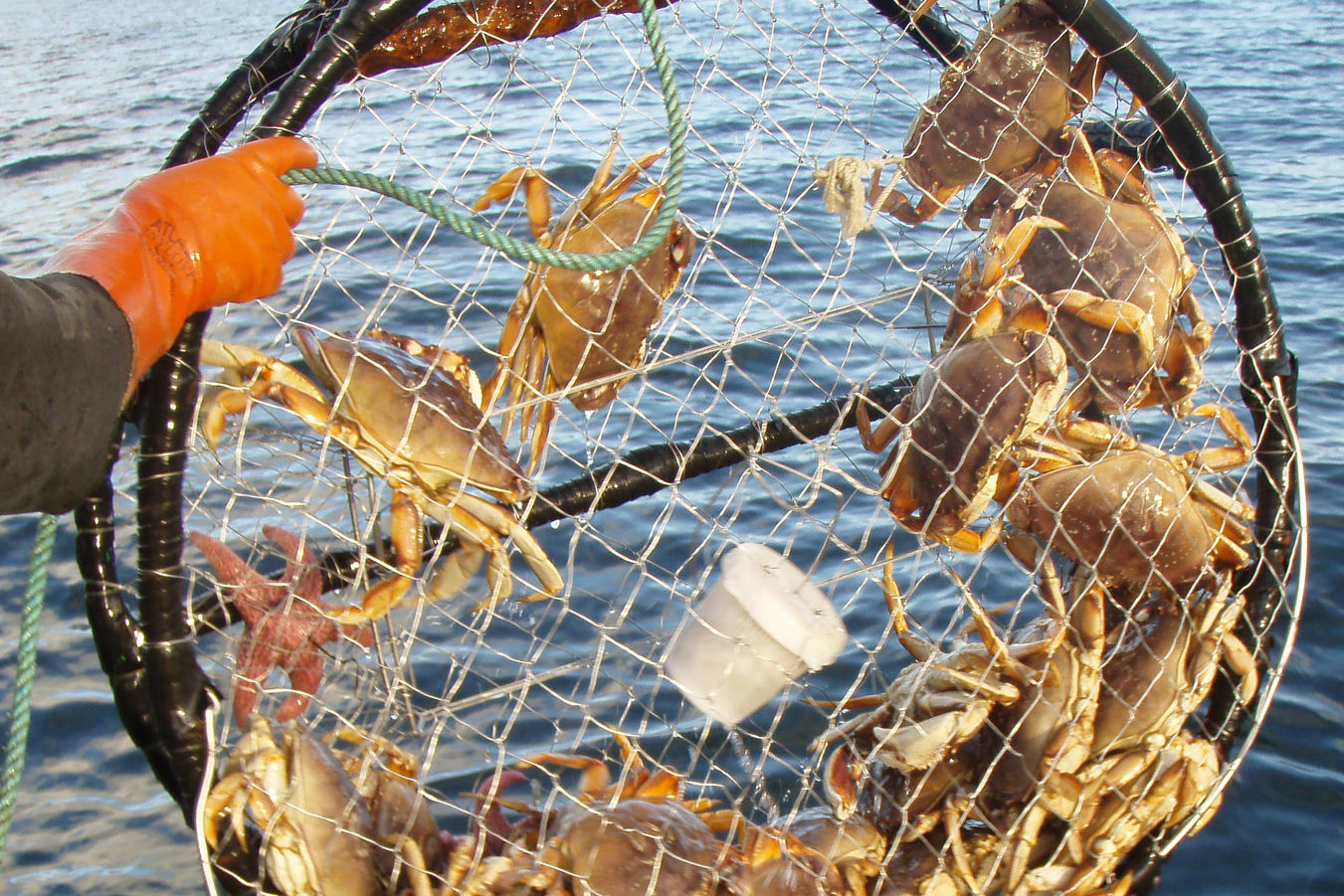
Scattered crabbing vessels dotted the horizon from Klipsan Beach and along the southwestern Washington coast last Monday. It was the start of the new commercial crabbing season — and possibly, sellers hope, the rebounding of the local market.
Commercial crabbers settled on a seasonal price with seafood processors and were able to set sail on Jan. 22 after waiting for strong gusts and towering waves to subside.
Usually, the commercial Dungeness crab season starts on Dec. 1, but it was delayed because the crabs were not meaty enough.
Pacific Northwest crabbers have already lost over one and a half months’ worth of the crab season. This also made them miss out on the high demand during the Christmas and New Year season.
Because of the low supply, the price of crab has surged, affecting the revenue both crabbers and local sellers make.
This concerns Harry Yoshimura, the co-owner of Mutual Fish Market on Rainer Avenue. To adapt to the rising price, he has to either raise his price or buy fewer crab, but he always tries to meet his customers’ demands.
Yoshimura said the holiday seasonal prices were $10 to $11 per pound — the highest prices he has ever seen.
“It’s never been this bad,” Yoshimura said. “It’s the first time [the season has] been delayed for a long time because of bad test catches. We’re also dealing with Mother Nature, bad weather, which is also why fishermen aren’t catching much.”
But this season’s setbacks aren’t the only reasons why the price is increasing.
“It doesn’t help that China’s been bidding up the prices,” Yoshimura added. “They buy it at a very high price that makes fishermen want to sell it over there for big profit.”
Jeff Alfonzo, assistant manager at City Fish Seafood Market in Pike Place Market, has also noticed the recent sharp rise in price.
While crab meat price per pound increases every year — Alfonzo says when he started working, it was $7 per pound — he considers normal prices near $8 and higher prices near $10 per pound.
Alfonso often buys smaller crabs, because they’re cheaper. Larger crabs are sold by crabbers at premium price overseas, making them unaffordable to local sellers.
To hedge against rising prices, local sellers often buy crabs in bulk at their cheapest during the start of the season when inventory is abundant and then freeze them to supply the market throughout the year.
“I’d rather eat it fresh, but frozen is cheaper,” Alfonzo said. “The big fresh ones are going overseas.”
Before the delay, West Coast customers paid on average $5.99 to $6.99 per pound for cooked crab meat. Now, customers are paying between $7.99 to $10 per pound on average.
With fewer people buying, smaller local businesses are hurting.
Ryan Le, son of the the owner of Lucky Seafood on Beacon Avenue, says that regardless of price, during holiday season, they still have to buy crab to stock the store.
“Some people still come to buy it,” Le said. “But not as many locals really want to pay as much for it anymore.”
Crab weight hard to forecast
It isn’t uncommon for crabs to have low meat fill in some years, according to University of Washington marine research scientist Ryan McCabe. The last time the season was delayed to Jan. 15 was in 2004.
Dan Ayres is the coastal shellfish lead biologist for the Washington Department of Fish and Wildlife. He has been monitoring ocean conditions and the impact on marine wildlife for decades.
There is no clear answer to why in some years there is an abundance of skinny crabs, Ayres said. Sometimes it means that there’s a lot of crab on the ground that are sharing the same food sources — which is a good thing. Sometimes it just means there are a lot of crabs that end up skinny. Ocean temperature and condition play roles as well, he said.
Crabs are also tested for quality before the season starts. Too many substandard crabs also affect the availability. Because there are so many variables, it’s hard to forecast how the crab market will behave in upcoming years.
Washington has different harvesting times for different parts of its coast and the Puget Sound to avoid actively fishing on premature soft-shell crab. It also has certain areas designated to both non-tribal and tribal commercial fisheries. Recreational season comes before each fishery season listed.
For the rest of the Washington coast, extending north from Klipsan Beach to the U.S.-Canada border, the commercial season was set to open Sunday.
An increase of crabs on the market could be a relief for burdened small business owners.
“I just don’t like how [everything] just turned crab into an expensive commodity,” Yoshimura said. “Everyone is getting hit hard.”


We need to give our local water men a big thanks, because we would not have any seafood without them. A lot of hard work goes into catching crab. The market/demand always fluctuates, so water men work just as hard, but for much less at times. Could you imagine if your paycheck was 30% less than the last one?